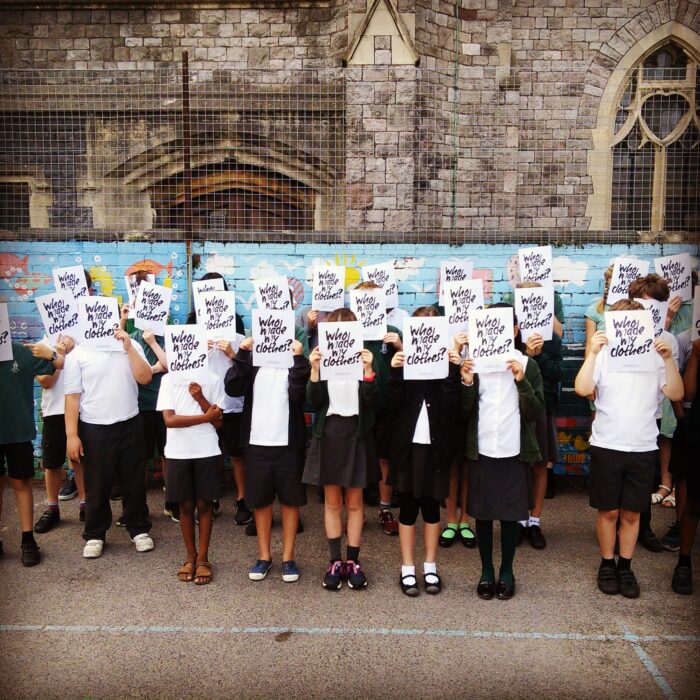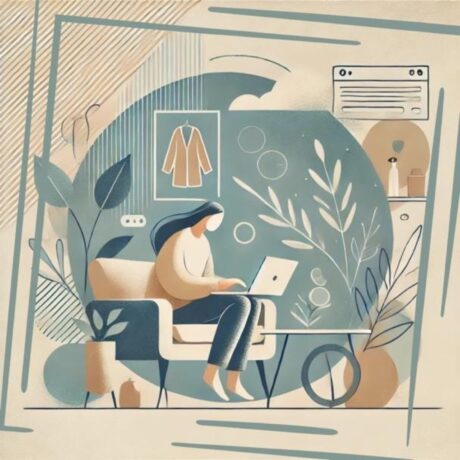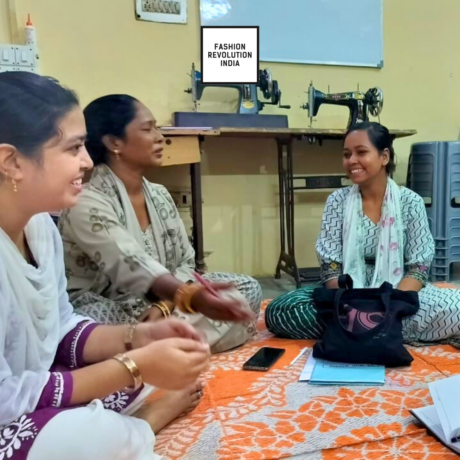How can we make sure it never happens again?
Student: “Did that really happen?”
Teacher: “Yes”
Student: “But it’s awful …”
Teacher: “Yes”
Student: “How can we make sure it never happens again?”
…. and so went the conversation with a class of thirty 9-10 year olds this week when they heard about the Rana Plaza disaster of 2013 for the first time.
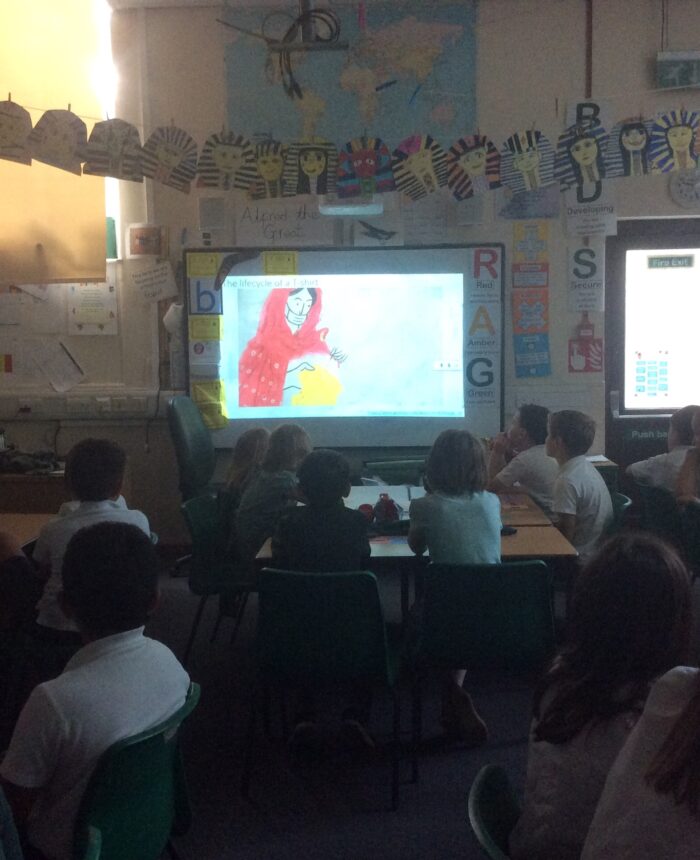
It doesn’t matter whether you’re nine or ninety, people of all ages seem to go through the same initial reactions; wonder that they never considered where their clothes came from; surprise when they find immediate connections with people and places the other side of the planet; intrigue at the thought of the stories their clothes could tell if only they knew how to talk.
Before getting back in the classroom I’d spent the last three weeks working with Beth, Zhara and Jemma in Fashion Revolution’s Who Made My Clothes? online course office and watched as thousands of learners around the world went through the very same process that this class of young clothes detectives were going through in a school in Bristol in South West England. On the course almost 8,000 learners had been researching, reading reports and delving into supply chain politics in order to tease out human stories that were hidden within – becoming empowered through knowledge to make informed decisions.
On the course discussion boards many posted about wanting young people to be better educated about fashion supply chains. I couldn’t agree more. The hidden voices of garment workers should be echoing through the classrooms and every child should feel empowered to have their concerns heard about the impact the fashion industry has on people and places. In fact, article 13 of the UN’s Rights of the Child reiterates this; it states that children should have the right of freedom to seek, receive and impart information.
But how can teachers ensure that opportunities for such learning are there when their curriculums don’t allow for such content to be covered? Or when education policy makers omit these strands or teachers are not well enough informed to weave in the themes through other learning opportunities?
The final week of the Who Made My Clothes? course asked participants to consider making a pledge. To think about what they can do (no matter how big or small) that might make a difference. The discussion boards have been filled with inspiring ideas. Some have been pledging to tell people about what they have learned, to invite friends round for a film night to watch ‘The True Cost’. Some have pledged to learn how to mend their clothes, while others have promised to write to more brands to ask more questions about their supply chains.
As part of the course team we all took the course alongside the truly inspirational learners. So, I too needed to think about what I could do; where might I have the most impact? While some may be great at using social media to raise awareness of the issues, or be a whiz at organising a clothes swap, these aren’t my strengths. What I do though, is work with schools and universities every day in my role as a trainer of teachers at the University of the West of England in Bristol. So that was why I was standing in front of 30 students on a Monday morning. I pledged to go into as many schools as I can and work with young people and teachers to engage, enable and empower them to think about Who Made My Clothes?
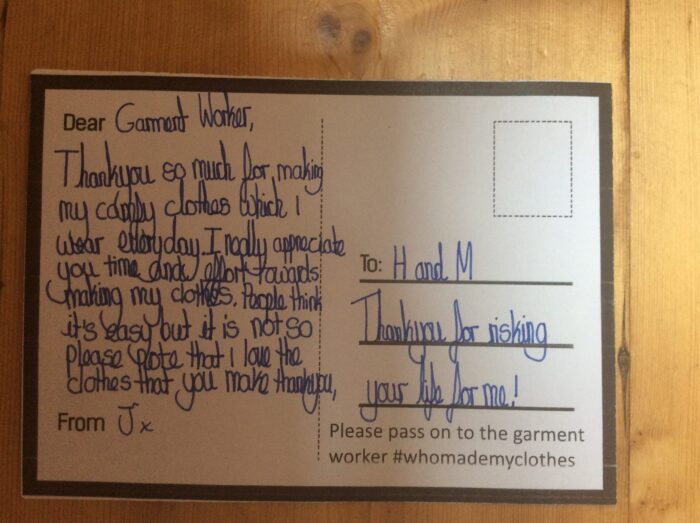
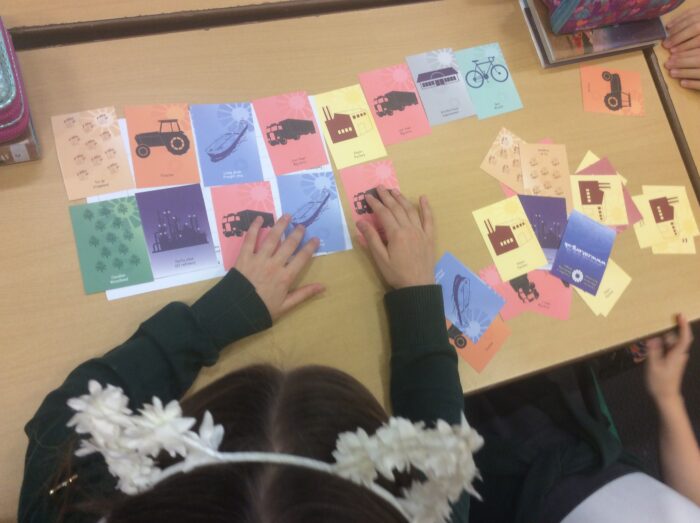
Over the course of this week I’ve worked with 120 young people and their teachers and tried out a number of different activities:
- We used picture cards to map the different stages of their clothes journeys to their wardrobes. No longer were their garments seen as just the product of “My Mum buys them from a shop”.
- We watched a short clip all about the lifecycle of a t-shirt- instant surprise, a far more complicated journey and loads of questions resulted
- We thought about what factories might be like and used extracts from The Garment Worker Diaries. We used role play to develop empathy and allow for discussion of difficult issues in a safe space.
- We wrote to garment workers using Fashion Revolutions’ free postcard template and then used Twitter to get in touch with brands and ask the question: who made my clothes?
Finally, we watched news reports of the Rana Plaza disaster; connecting us to the past we are powerless to change, but linking us to a future we have the ability to influence. What can you do? What can you pledge in your life or work, that will help answer the children’s question;
How do we make sure it never happens again …..?
